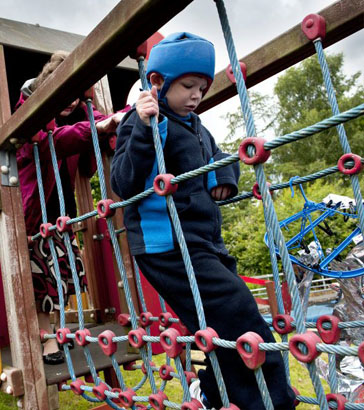
We are educating a new generation of children in the 21st century with
a 20th-century toolkit.
Carpenter, 2012
In 2007, Emerson and Hatton reported that the number of children assessed
with severe and complex needs in one local authority between 1984 and 2001
had doubled. Meanwhile, Blackburn, Spencer and Read (2010) noted the rise
in the number of families recognised as having a disabled child from 700,000
in 2004 to 950,000 in 2010.
The Department for Children, Schools and Families recorded a 5.1% rise in
the number of children with SLD
and a 29.7% rise in the number of children with PMLD
between 2004 and 2009 (DCSF, 2010). In 2006, head teachers of SLD schools
reported that recent years had seen a 'larger PMLD population and
a substantial increase in the number of pupils with extremely challenging
behaviour' (Ofsted, 2006).
These comments have been largely supported by a series of studies examining
who attends SLD schools,
conducted by Male (1996) and Male and Rayner (2007 and 2009).
Despite recent rises in the overall numbers of children with SLD
and PMLD,
the actual numbers in England remain relatively small. The latest estimates
in 2012 are of approximately 34,000 children with SLD and 12,000
children with PMLD.
This compares to a mainstream population of around 8.2 million. As a whole,
children with SLD and PMLD
constitute
around 0.5% of the school population (DCSF, 2010).
It's recognised that these figures are inexact, since there is no nationally
agreed definition of either condition, but they are broadly accurate as
at 2012.

Carpenter, Cockbill, Egerton and English (2010) suggest an ever-increasing complexity
in the learning difficulties population. This change in population has given
rise to the new category within special educational needs terminology: Complex
Learning Difficulties and Disabilities (CLDD).
Children with CLDD include those with co-existing conditions
(eg autism
and ADHD),
or profound and multiple learning disabilities. They also include children
who have newly begun to populate our schools – among them those with difficulties
arising from premature birth who have survived infancy due to medical advances;
those with disabilities arising from parental substance and alcohol abuse;
and those with rare chromosomal disorders.
Many may also be affected by compounding factors such as multisensory impairment
or mental ill-health, or require invasive procedures, such as supported
nutrition, assisted ventilation and rescue medication.
Watch the video clip of Prof. Barry Carpenter giving a lecture at the Schools Network Annual Conference, then consider the following questions:
- How does your school monitor the needs profile of children and track this changing profile over time?
- What significant differences have you observed, if any, over the past ten years? What about the past 20 years?
- How has your curriculum evolved to respond to any changes you have observed? In particular, how has your curriculum and practice responded to the evidence that increasing numbers of children have two or more coexisting conditions?
- Have you addressed what Carpenter refers to as 'pedagogical reconciliation'?

Blackburn, C. M., Spencer, N. J. and Read, J. M. (2010) Prevalence of
Childhood Disability and the Characteristics and Circumstances of Disabled
Children in the UK. BMC Pediatrics
Carpenter, B., Cockbill, B., Egerton, J. and English, J. (2010) Children
with Complex Learning Difficulties and Disabilities: Developing Meaningful
Pathways to Personalised Learning. The SLD Experience. 58: 3-10.
DCSF (2010) Salt Review: Independent Review of Teacher Supply for Pupils
with Severe, Profound and Multiple Learning Difficulties, Annesley: DCSF
Publications.
Emerson, E. and Hatton, C. (2007) The Mental Health of Children and Adolescents
with Learning Disabilities in Britain, London: Foundation for People with
Learning Disabilities.

Male, D.B. (1996). Who goes to SLD schools? Journal of Applied Research
in Intellectual Disabilities. 9 (4) 307-323.
Male, D.B. and Rayner, M. (2007) Who goes to SLD schools? Aspects of Policy
and Provision for Pupils with Profound and Multiple Learning Difficulties
who Attend Special Schools in England. British Journal of Learning Support.
Male, D.B. and Rayner, M. (2009) Who Goes to Special Schools? Educational
& Child Psychology (2009) Vol. 26 No. 4
Ofsted (2006) Inclusion: Does it Matter Where Pupils are Taught? London:
Ofsted.
Rose, R. (1998) 'The Curriculum. A vehicle for inclusion or a lever for
exclusion?' in Tilstone, C., Florian, L. and Rose, R. (ed.) Promoting Inclusive
Practice. London: Routledge.